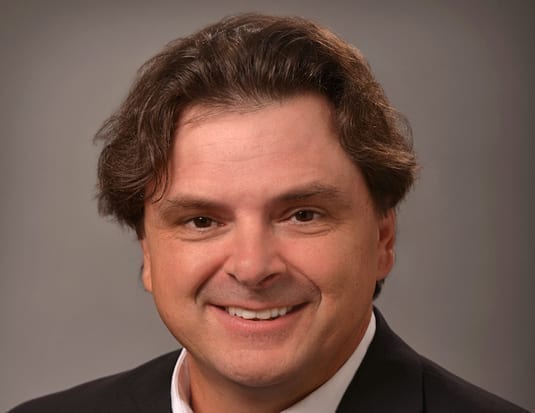An integrated approach to the collision repair workforce is the most effective strategy for the future, says new CCIF Chairman.
Patrice Marcil got his start in the collision repair industry back in 1985, since then he’s worked in the family business as a technician, as well as taking on leadership and training roles within the industry. Currently serving as Director, Customer Experience, Axalta Coating Systems, Marcil has also been a long- standing member of CCIF as well as a an advocate of investment in quality collision repair training and education. Having also been nominated as the next CCIF Chairman (from 2018), Collision Management asked him about his background, some of the major industry changes he’s witnessed, as well his views on training and the future of collision repair.
Collision Management: Can you tell us a little about your background? For example, did you consider a career in the collision industry early on?
Patrice Marcil: I was born into the industry and never really questioned my career path. My father owned a body shop and raced cars on the weekend, I painted my first car at 12. I always knew my career would be in the collision repair industry one way or another.
CM: When you started working in the collision industry as a technician, what were some of the things you became aware of?
PM: What became obvious very rapidly is the pace at which technology evolves. Back when I started, full frame cars were being replaced by unibodies, Basecoats and clearcoats were becoming the norm and customers were becoming more aware, educated and demanding of the products they use.
CM: Teaching and education has been a significant part of your life. Was it something that you always aspired to?
PM: Education came to me one night in a phone call. The program director of the local school board called me and offered me a job as an instructor. He was a customer at the shop and enjoyed how I helped him with his car. This call changed my life considerably. At that moment I decided to go back to university to learn how to teach, which was never part of my initial plan.
CM: What led you to decide taking on a more management type role?
PM: I decided to start teaching because I was not impressed with the skill level of apprentices coming out of schools. I told myself to stop complaining and do something about it. This set me on the path toward more management type roles.
CM: You’ve been a strong advocate for improved training and education programs within the industry, can you tell us a little about some of the initiatives you’ve been involved in and why?
PM: During the 10 years I was a teacher, I always looked for opportunities to improve learning and development of the workforce. I got involved in auto body program improvement with local, regional and federal governments, as well as local and global skills competitions. When I started at Axalta in 2000, we really improved the content and delivery to meet our customers’ needs and expectations. We developed process based training programs with associated training paths and today we are at a point where we offer virtual in-shop training online. Technology and connectivity is changing the way body shops do business. Axalta is there with tools designed to boost shop productivity and performance and to meet the demands of today’s industry.
CM: During your time at Axalta Coating Systems training and customer experience have been a major emphasis, can you tell us a little about that?
PM: Everything Axalta does is with the customer in mind, from training modules to new technology. Trained and proficient customers are happy customers, and happy customers are not only more likely to be loyal but also be advocates for your company. At Axalta, we understand that our success is built on that of our customers and so, we want to ensure they have the tools they need to get the most performance out of our products as possible.
CM: Having been named the next Chairman of CCIF, what are some of the key trends/factors you see for the industry related to both training and customer experience, particularly as technology continues to advance?
PM: There are three pillars the CCIF is focusing on—Profitability, Technology and People. Educated and trained collision repairers, insurers and everyone else in the industry will advance those three pillars for the benefit of the consumer. The ultimate goal is to perform quality and safe repairs.
CM: What steps do you think we can take to ensure the future of the industry when it comes to attracting and training the next generation of repair technicians and industry professionals?
PM: We need to facilitate the integration of the workforce by creating sustainable communication with schools and education authorities to let them know what industry’s needs are now and for the future. We also need to do our part to create an attractive industry that young people want to have a career in.
CM: Is there anything else you’d like to mention?
PM: Being nominated as the next CCIF Chairman is a great honour. I look forward to working with all partners within the collision industry. CCIF is a very unique forum where open dialogue has proven more effective and beneficial to the industry than confrontation. I intend to keep it that way.



